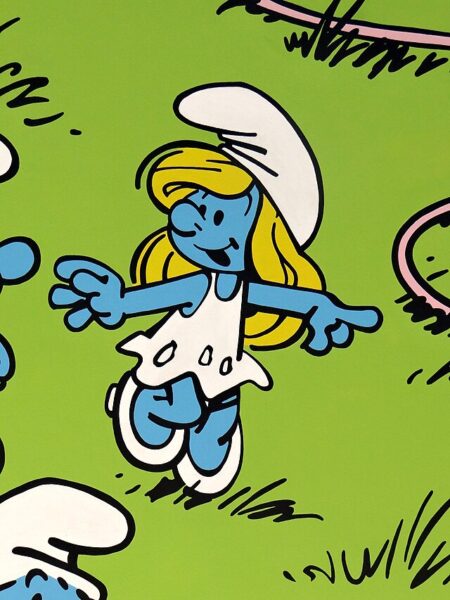
According to Christopher Booker, there are only 7 plots in all of storytelling, therefore, it is undeniable that repetition of plot and characterisation in film is unavoidable. In both contemporary and historical media, tropes are used as reference points for audiences to recognise and find comfort in their familiarity, allowing writers to ride off the back of nostalgia to create the illusion of an emotional connection with an audience. Whilst this is effective in a bid to make a profit, it culminates in a cultural landscape which is concentrated by the same stories told over and over again.
Aside from creating a repetitive climate of filmmaking, tropes also reinforce archaic social hierarchies by presenting stereotypical dynamics and characters. One such trope is the epidemic of a ‘Lone Woman’ in a group of men, coined by Pollitt in 1991 as ‘The Smurfette Principle’. Pollitt stated how this pattern of representation reflects how “boys are the norm, girls the variation; boys are central, girls peripheral”. Not only do these unequal ratios place more responsibility on the woman to represent the entire female population, but they also tokenise said women into stereotypical concepts instead of layered characters with flaws, emotions and ambitions. These ‘Lone Women’ rarely have consistent female friends, are limited to certain roles in terms of a male counterpart (mother, sister, lover etc): providing writers with a shortcut to their film passing the Bechdel test, rather than the trouble of fleshing out a complex female character in her own right.
The ‘Lone Woman’ exists in a plethora of forms – all relying heavily on stereotypes – including a woman who is unaware of her femininity – like Eleven in Stranger Things Season 1, or alternately, she acts as a hyperfeminine, sexualised object used to create a convenient love interest for another protagonist. Perhaps she transitions from the former to the latter in a dramatic makeover, her appearance the foundation of her character’s identity; this can be somewhat applied to Karen Gillan in Jumanji, whose character’s appearance is only prioritised as her main feature after she enters the game and becomes a stereotypically attractive woman. This characterisation suggests women are only interesting enough to be a protagonist in film or TV when she is surrounded by men, if her personality is stereotypically ‘male’ or if her feminine appearance is the basis of her character.
In Fight Club, Marla Singer is the sole female protagonist, with the Fight Club itself being totally male. Helena Bonham Carter even noted that the set of Fight Club was so overwhelmingly male that during the support group scenes, she welcomed the opportunity to have other women on set. Similarly, Star Wars is guilty of this trope, with Princess Leia making up a stark majority of female dialogue. The amount of screentime given to women other than Leia in the original trilogy totals to just 63 seconds. This is not unexpected for a male oriented saga like Star Wars, as if more than one woman exists in a group, the films are then diminished to ‘chick-flicks’ made for girls only. A female dominated film is for women, a male dominated film is for everyone. “Boys are the norm, girls the variation“.
‘The Smurfette Principle’ is a trope used to maintain a balance between a film being diverse enough to ward off controversy and it being branded with the dreaded label of a ‘girly’ movie. Writers use this ‘Lone Woman’ as a catch all for female archetypes – she is a mother, a sex symbol, a tomboy and a hyperfeminine idiot all at once. She is ‘one of the boys’ whilst simultaneously being unavoidably excluded by all her male counterparts.

